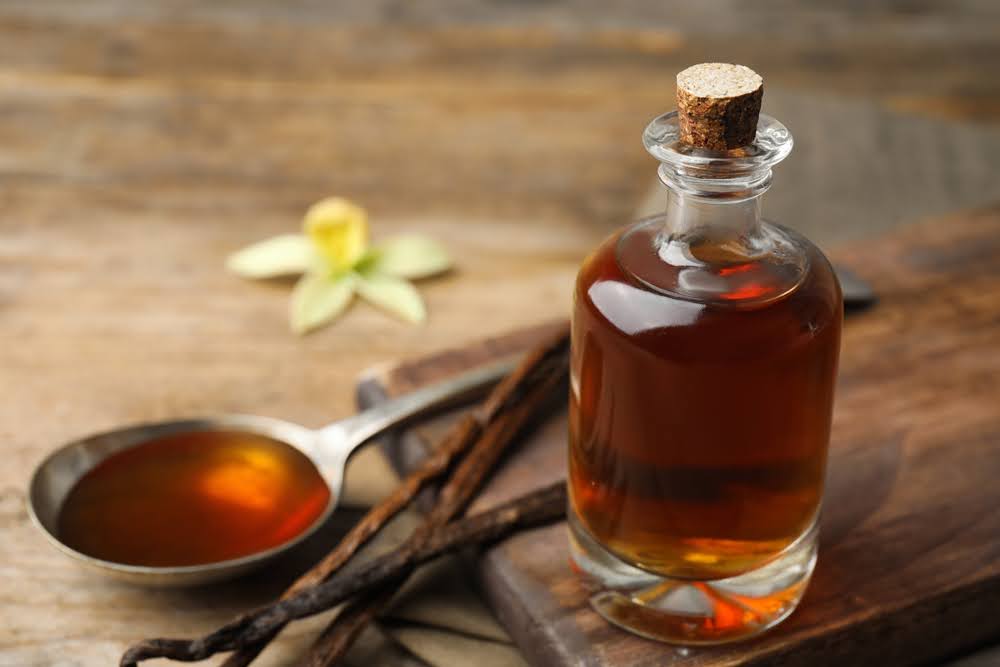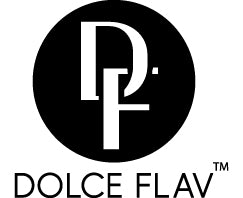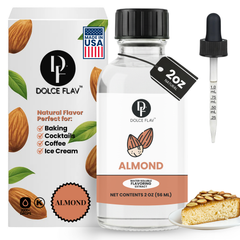
Flavor extracts and food flavorings are staples in the culinary world. They’re used to enhance dishes beyond their natural flavors and turn them into something entirely new. A simple vanilla cake can suddenly taste like fresh strawberries and cream or the ripest mangos. A barely tolerable cheap vodka can suddenly taste like a cheesecake. The possibilities are endless when they’re used properly and made to a high standard.
How did humans figure out how to make them, though? They’re not like seasonings. You don’t just crush up a cheesecake and get food flavoring, or dry out a strawberry and put it in a blender. They’re complex food science experiments that have to be carefully crafted. So, how have they been in use for so long?
Today, we’re going to explore that question with a complete history of flavoring extraction techniques from the first documented uses of it to the modern day.
Let’s get started.
The Ancient Development of Flavor Extracts
First and foremost, the flavor extracts you think of today are relatively new in the grand scheme of things. There were no crazy food flavorings made with various chemical concentrates before the mid-1800s.
However, there are rudimentary examples of food flavor extracts that have been around practically forever.
While not exactly what we’d consider a flavor extract today, many oils are extracts.
If you simply smash olives hard enough, you’ll press out the natural oils, and you get an olive-flavored oil that can be used for the same uses we think of today, but it also adds flavor. That’s why it’s a popular dress. The same goes for various nut oils.

Ancient essential oils are basically extracts as well. To make essential oils, a food item is placed in a liquid solution. Usually, this is an alcoholic substance, because the liquid needs to evaporate. That is allowed to sit for days until the natural oils of the item seep out into the fluid the same way tea does when you make a cup of tea.
However, the liquid used as a vessel is usually evaporated or otherwise separated to leave you with just the oil from the food item. Garlic oil, lavender oil, and similar things were used in ancient Egypt, eastern Asia, and various other areas. Sometimes, they were used for culinary purposes. Many were used as perfumes or ritual items. You can still make these rudimentary extracts today with minimal equipment and resources.
Obviously, this is very different than the core of our topic, today. However, it’s essentially the start of the food flavoring and flavor extract industry science. It was the first step in extracting flavor from a food without actually having to use the food item in a dish.
The 1800s: The Start of Flavor Extracts
The 1800s are when we really started to see flavor extracts coming into play in a similar way as we see them.
The first similar item that is recorded is hot sauce.
While it’s a staple today, hot sauce can only be traced back to 1807 in North America. It wasn’t available elsewhere, yet. We know this due to evidence of “cayenne sauce” being sold in what is now the western United States. However, it was likely made before then, because it’s simply the process of extracting capsaicin and flavor from peppers via fermentation and concentration. It’s just impossible to determine if it was commonly made before then.
Still, we’re not at what we’d consider a true extract.
In 1867, we get a lot closer, and you start to see the first product resembling a modern flavor extract. Unlike a lot of things during that time period, this one was actually meant to be what it turned out to be, as well.
During a chemistry experiment by candy producers to find new ways to flavor their sweet treats, isoamyl isolate was found. At the time, it was said to smell like pears, and that fruity scent was instantly recognized as a viable option for candy-making.
With further research, isoamyl isolate was found in other natural food items such as bananas. So, it became a process of isolating that compound rather than trying to make it. Keep that in mind, because it has a lot to do with the process used by modern food scientists to recreate flavors.
Modern Flavor Extract Production
Modern flavor extraction techniques are similar to the traditional methods, but they’ve gotten far more complicated. This started around the late 1800s when synthetic fruit flavors became a thing and dominated the sweets market in the US and parts of Europe. As we all know, those are now commonplace. So, how are they made?
At the base level, natural flavor extracts are made the same way that traditional essential oils were made way back in ancient Egypt. The process is just a bit more refined.
To start, a natural ingredient is submerged in water and left for weeks until the natural oils seep out like tea or coffee. Then, the solution is distilled or otherwise concentrated to reduce the water levels and make the oils pop. That process is still commonly used for natural food flavorings and extracts.
Things get more complicated when you dive into the artificial extracts that are commonly used and more complex flavor extracts.
With more complex natural extracts, such as an organic strawberry chocolate extract, multiple flavor extracts will be mixed by a flavorist in various amounts until the desired flavor is achieved. Then, the approved mixture ratio is recorded, and it can be replicated over and over again.
That’s one major advantage for modern extracts even if the method used for all-natural extracts is similar to what was done thousands of years ago. The introduction of machines allows for far more accurate extraction methods, and replication is far easier than it would have been in an ancient environment.

Artificial flavor extracts are even more complicated, and they branch away from the traditional means of production quite a bit.
Instead of water, alcohol is commonly used. This is, in turn, used with a “synthetic flavor agent”. A synthetic flavor agent is essentially a scientifically created product that recreates the exact molecular structure of a food item. Each synthetic flavor agent is “built” from the ground up with the actual counterpart used as a reference, using chemicals and natural derivatives.
While “artificial” flavor extracts, or food flavorings, sound like something you’d want to stay from, the truth is, they’re not like the GMOs, pesticide-filled fruits, and other things that give consumers reason to worry. They’re simply recreations of base flavors on a molecular level, usually with 100% natural compounds derived from raw ingredients, and then combined to create the wild flavors you see on today’s market.
Obviously, since you can’t just condense something like a birthday cake into a small, liquid-filled, vile, that’s the only way you’re going to get such extravagant extract flavors.
Differences in the Use of Extracts Over Time
As we’ve shown, the concept of flavor extracts started long ago. As far back as ancient Egypt, various cultures were creating essential oils, which are basically the same as any natural flavor extract you’ll find today.
However, their usage has been dramatically different throughout the ages.
For this one, we’ll work backward.
In the modern age, you mostly see flavor extracts in one or two parts of the culinary world.
First, you’ll commonly find them in desserts and the baking industry. They’re most often used as a way to take a flavor-neutral dish, such as vanilla ice cream, and create an entirely new flavor. For instance, strawberry cream extract might be mixed in to create a strawberry and cream ice cream treat without having to do much more than add a few drops of extract and mix it well.
Then, they’re commonly found in alcoholic beverages and sweet drink options. Because they’re concentrated well and very flavorful, they can make harsh alcoholic drinks a lot more enjoyable, and they’re crucial for making a lot of the wilder, less natural-seeming, flavors of shakes, smoothies, etc.
However, you can occasionally find them in normal cooking recipes. Seasoning is more often used in that area, but when a chef truly wants to excite your taste buds, they do so with flavor extracts and an expert-level understanding of food science. It’s not something you want to do to every dish, though.
Before that, in the 1800s, you mostly saw flavor extracts in the form of hot sauce, and eventually, candy flavorings once isoamyl isolate was discovered. By the end of the 1800s, various fruits were synthetically mimicked with extracts for candy production, but they weren’t commonplace in ordinary cooking, yet.
Everything before that, and you’re basically looking at what you’d call essential oils in the modern world. They also weren’t known for being used as food additives.
The essential oils of Egypt and Asia were primarily used as perfumes and oils that were used in the preparation of religious and cultural ceremonies. Throughout history, essential oils have also been used as medicinal items. Garlic oil, which is a natural antibiotic and was available long before manufactured antibiotics, was a common medicinal oil.
While these extracts have had different primary uses throughout history, they have been important parts of practically all cultures throughout time, and despite the science behind them being advanced upon, they’re largely the same general concept.
Modern Extracts and How They Benefit the Culinary World
The past is interesting when it comes to flavor extracts because the products used throughout time were dramatically different both in complexity and usage all the way up until the 1800s. However, the modern world is obviously what’s most important to us as modern people. After all, these are the products we’re using, and we’re using them for our own reasons.
So, what really sets modern extracts apart, and how should you be using them in the modern era?
What Sets Modern Extracts Apart?
Two things set modern extracts apart from their historical counterparts the most. First, the complexity of the extracts is dramatically different.
Traditionally, a flavor extract was just a basic natural ingredient submerged in water until its essential oils seeped out. While that’s still a method used today, the scale at which we can do that, and the number of things we can make such extracts from, are staggering. There’s also the complexity involved in combining flavors to create unique extracts that simply wouldn’t have been possible before. Extracts such as cotton candy, cheesecake, birthday cake, and mango would have been far beyond anything someone in 1500 could do.

Then, there’s the replicative ability of modern manufacturing.
With traditional methods, there are a lot of variables that affect the finished product. While it was more than possible for someone to make the same general extract over and over, modern manufacturing processes allow us to make extracts with an extreme level of precision. This allows for more fine-tuned mixing and endless replication of recipes.
How Should You Use Flavor Extracts?
Using flavor extracts can completely change the way you cook. There are so many options, and they work exceptionally well. However, they’re very niche products that have to be used properly.
Flavor extract isn’t like seasoning or sauces. The extract doesn’t elevate the existing flavor of a dish. It completely changes it.
As such, there are dishes where it’s appropriate to use extract, and there are some when it's a bad idea.
In general, you want to use extracts in 2 situations.
First, extracts can be used with more neutral foods to create a unique flavor. Again, think of turning vanilla ice cream into something truly special like mango ice cream.
Then, it can be used to eliminate an unwanted flavor within a dish. The best example of this is alcohol. Think of cheap vodka. No one likes the taste of it. However, it’s good for mixed drinks when you don’t want to waste good alcohol. You can use extracts like pineapple extract to mask that harsh flavor and make a cheap drink taste like a $40 cocktail.
There are unique circumstances when you can branch out and change the flavor of other dishes, but you’ll have to experiment to find out what works best.
If you want to get a collection of extracts built up and start experimenting, visit Dolce Foglia today. We offer the finest oil-soluble extracts and water-soluble flavoring available in a vast selection.

